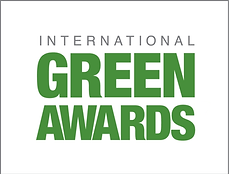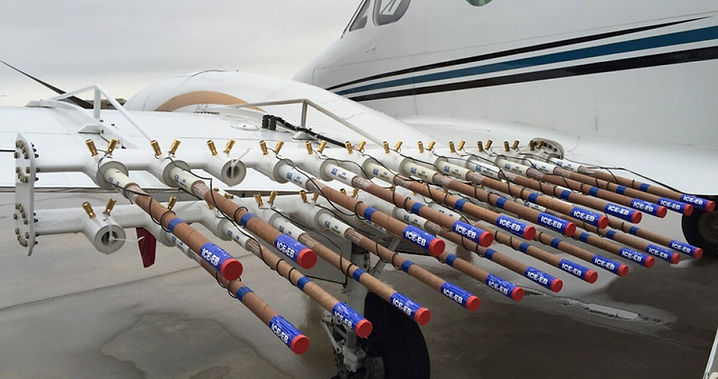
INDIA - ASIA


PRECIOUS METAL MINERALS - RECYCLING
Advantages of Scrap Material Processing and Metal Recovery:
-
Conservation of Natural Resources: Extracting precious metals from scrap reduces the need for mining new ore, helping to preserve finite natural resources and minimize environmental disruption.
-
Waste Reduction: Recycling scrap metals converts waste into valuable resources, decreasing landfill accumulation and lowering environmental impact.
-
Energy Efficiency: Metal recovery from scrap typically consumes less energy than primary extraction from ore, resulting in reduced greenhouse gas emissions.
-
Economic Advantages: Recycling precious metals promotes sustainable industrial practices, decreases reliance on imported raw materials, and offers long-term cost savings.
-
High-Purity Production: Producing metals with purities up to 99.99% ensures high quality for advanced applications, fostering innovation and ensuring safety in end-use products.
Balke & Partners provides high-quality, customizable precious metal alloys tailored for jewelry, industrial, and casting applications.
All products are manufactured under stringent quality controls, with immediate availability.
Our price range is determined by quantity, delivery terms, and the specifics outlined in the contract.
Delivery quantities range from 500 to 600 MT annually, with a lead time of 10 to 25 days from order confirmation for supply.



PRECIOUS METALS & ALLOYS
Precious metals are rare, naturally occurring metallic elements
that are highly valued for their beauty, rarity, and special properties
such as corrosion resistance and excellent conductivity. They are often used in jewelry, coinage, industrial applications, and investment.
The most common precious metals include gold, silver, platinum, and palladium, but also other metals like rhodium, ruthenium, iridium, and osmium.
Due to their durability and scarcity, precious metals typically have higher market value compared to other metals.
Product Range Overview:
Balke & Partners specializes in high-purity precious metals (over 99.90%) in various forms such as bars, ingots, wires, powders, and sponges. They also produce custom alloys tailored to specific client requirements, including gold, platinum, palladium, rhodium, ruthenium, iridium, and silver.
Key Highlights:
-
Ultra-Pure Alloys: Master alloys produced under strict quality controls using high-purity metals, ensuring uniform composition and superior quality.
-
Versatile Colors & Carats: Alloys available in various colors (yellow, white, pink, red, green) and carat grades (from 8K to 22K, including specific blends like 9, 14, 18, 22, and 24K for gold).
-
Application-Specific Alloys: Includes general-purpose alloys, casting alloys, and brazing alloys, all designed for optimal performance and ease of use.
-
Ready-to-Use & Custom Development: Standard alloys are available for immediate delivery; custom alloys can be developed according to specific customer needs.
-
Technical Support: Extensive technical backing ensures optimal alloy performance and compatibility with jewelry and industrial applications.
Summary of Product Offerings:
-
Gold Alloys: In various karats, including yellow, white (Ni or Ag base), pinkish, and red, suited for jewelry production.
-
Silver and Silver Alloys: Developed for jewelry and industrial use, including master alloys for silver.
-
Platinum, Palladium, Rhodium, Ruthenium, Iridium: In high purity forms for industrial, catalytic, or specialty applications.
-
Specialty Alloys: Brazing alloys and specialty compositions engineered for specific manufacturing needs, with hardness levels and melting behaviors suitable for casting and joining.
Sample Alloy Types:
-
Carat Range: 8K to 22K, including specific blends like 9/18, 14/10, and 22/20.
-
Colors: Yellow (standard, deep, rice yellow), white (Ni or Ag base), pink, red, greenish.
-
Form Types: General purpose alloys, casting alloys, brazing alloys, special alloys for specific applications.
HOW WE WORK
Overview of Scrap Material Processing and Metal Recovery
Our facility specializes in processing various scrap materials, with a focus on recovering valuable precious metals—particularly silver—from diverse sources. Below is an outline of the types of scrap handled and the recovery process:
Types of Scrap Material:
1. Spent Catalyst (Silver on Alumina Catalyst):
-
Description: We extract silver from used catalysts employed in ethylene oxide production, which contain 15–30% silver.
-
Recovery: Silver is recovered and refined into high-purity forms such as bullion (bars or granules) or chemical compounds like silver nitrate and silver oxide.
2. Used Gauzes:
-
Metal gauzes and meshes used in industrial processes that retain residual precious metals.
3. Scrap from Contacts:
-
Electrical contacts and connectors with residual metals, often including silver, gold, or platinum.
4. Chemical Plant Dust & Residues:
-
Dust and residues from chemical manufacturing containing trace amounts of precious metals.
5. Laboratory Wares and Thermocouple Wires:
-
Laboratory equipment and wires, particularly thermocouples, which may have precious metal coatings or cores.
Recovery & Refinement Process:
· Precious Metal Recovery:
We extract precious metals from all scrap types and refine them to at least 99.90% purity.
· Conversion to New Products:
Upon client request, recovered metals can be transformed into new catalysts or chemical compounds.
· Maximized Recovery:
Our team prioritizes achieving maximum recovery within available time frames, optimizing efficiency and yield.
· High-Purity Refining:
We are capable of refining metals up to 99.99% purity for clients demanding the highest quality.
· Refining on Returnable Material Basis:
We also provide refining services for materials returned after processing, ensuring a mutually beneficial arrangement.





Our Values:
Sustainability:
We are committed to environmentally responsible practices, focusing on sustainable recycling solutions to reduce our ecological impact.
Integrity:
Balke & Partners operates with complete transparency, honesty, and ethical standards in all interactions with customers, partners, and stakeholders.
Innovation:
By embracing technological advancements, we cultivate a culture of innovation to remain a leader in the recycling industry and offer advanced solutions.
Flexibility:
We adapt to changing market demands, ensuring our processes, services, and approach are flexible to meet the unique needs of our diverse clients.


INDIA - ASIA

RECYCLING SILVER IODIDE FOR CLOUD SEEDING
All products are manufactured under stringent quality controls, with immediate availability.
Our price range is determined by quantity, delivery terms, and the specifics outlined in the contract.
Delivery quantities range from 500 to 600 MT annually, with a lead time of 10 to 25 days from order confirmation for supply.
WHAT IS CLOUD SEEDING?
Cloud seeding is a weather modification technique aimed at enhancing precipitation. It involves introducing substances like silver iodide, sodium chloride, or potassium iodide into clouds to encourage droplet formation and stimulate rainfall or snowfall. The process is used to improve water supply, reduce the severity of droughts, or dissipate fog. Cloud seeding can be conducted via aircraft or ground-based generators, and its effectiveness varies depending on atmospheric conditions
The amount of Silver Iodide required for cloud seeding depends on various factors such as the size of the area targeted, the density of the clouds, and the specific seeding technique used. Generally, for cloud seeding operations, quantities typically range from a few grams to several kilograms of Silver Iodide per seeding event.
Typical dosage:
• In practical applications, around 0.1 to 1 gram of Silver Iodide is dispersed into the clouds per mission, often released from aircraft or ground-based generators.
• For larger operations or to seed extensive cloud systems, several kilograms may be used during a seeding campaign.
Key considerations:
• The goal is to introduce enough Silver Iodide particles to promote nucleation of ice crystals without excessive use, which is both economical and environmentally conscious.
• Precise quantities are usually calculated based on atmospheric data and the size of the cloud system.
1. Understanding Cloud Macrostructure
-
Cloud type: Ice nucleation efficiency depends heavily on cloud type (cumulus, stratus, or towering convective clouds).
-
Cloud top temperature: Silver Iodide is most effective in temperatures between -5°C and -20°C, where ice nucleation is favored.
2. Typical Silver Iodide Dosage
-
Aircraft seeding: Approximately 0.05 to 0.2 grams of AgI per cubic kilometer of cloud.
-
Ground-based seeding: Dosed via smoke generators or generators, often in the range of 1 to 10 grams per hour, depending on the cloud coverage and wind conditions.
3. Calculating the Amount Needed
-
Estimate cloud volume:
For large clouds, calculate the volume in cubic kilometers (km³).
Example: If targeting a cloud area of 50 km² with a vertical height of 3 km, the volume is approximately 150 km³. -
Determine number of seeding points:
Based on the cloud volume and seeding method, decide how many points or drops will be released. -
Apply dosage per volume:
Assuming 0.1 grams per km³:
[ \text{Total AgI} = \text{Cloud volume} \times \text{Dosage per km}^3 ]
[ \text{Total AgI} = 150 \text{ km}^3 \times 0.1 \text{ g/km}^3 = 15 \text{ grams} ]
For larger or more complex clouds, this amount can go up accordingly.
4. Environmental and Efficiency Considerations
-
Always start with the minimal effective dose.
-
Adjust based on real-time weather forecasts and cloud response.
-
Use the latest meteorological data to refine the seeding plan.
5. Operational Precautions
-
Maintain high purity Silver Iodide (~99%) to prevent contamination.
-
Use precise dispersal equipment to ensure even distribution.
-
Coordinate with local meteorological agencies and environmental regulations.
Summary:
Parameter Typical Range/Guideline
Silver Iodide per km³ 0.05 – 0.2 grams
Total for a small cloud 5 – 20 grams
Total for large operations 50 grams to several kilograms







